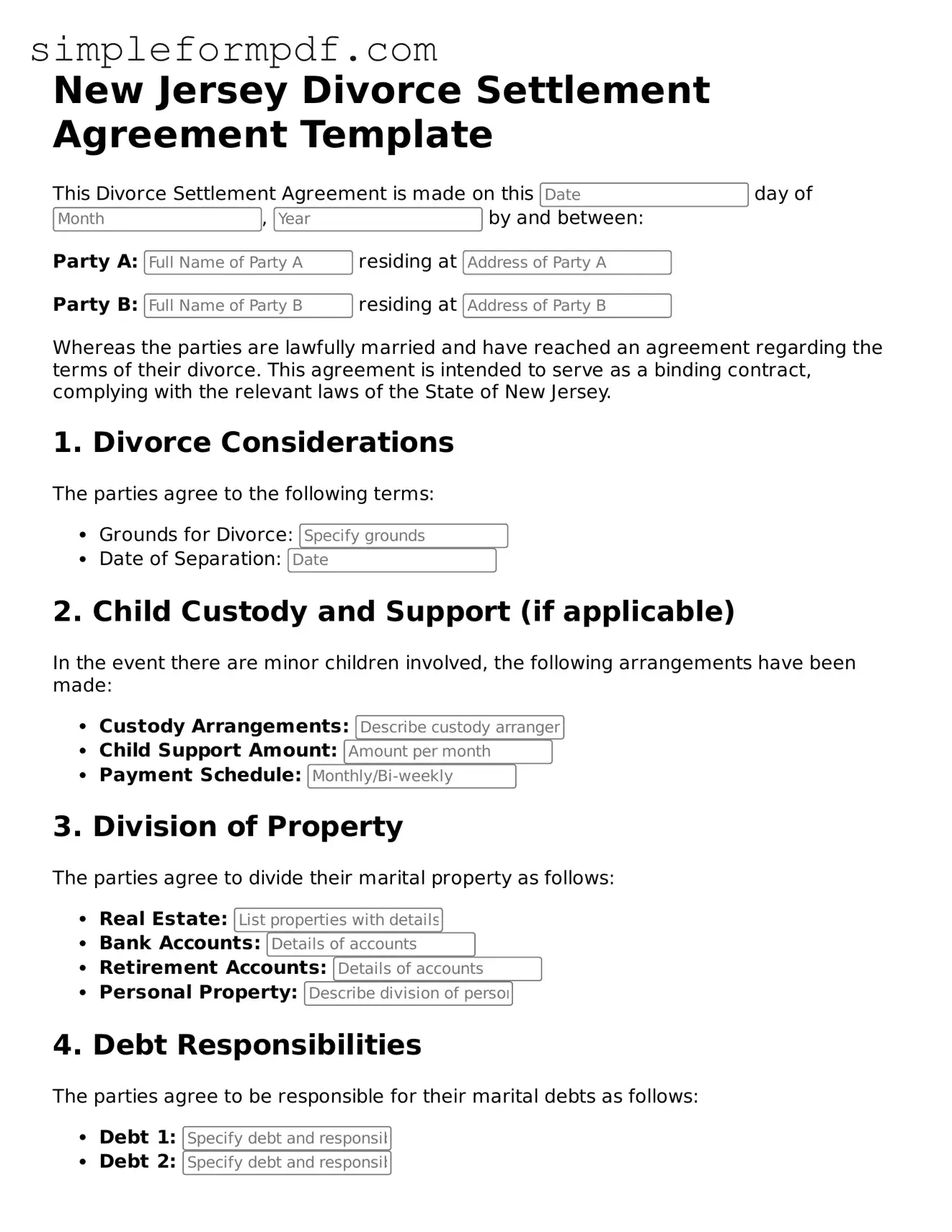Free Divorce Settlement Agreement Form for the State of New Jersey
The New Jersey Divorce Settlement Agreement form is a legal document that outlines the terms and conditions agreed upon by both parties during a divorce. This form addresses critical issues such as asset division, child custody, and support obligations. Completing this form accurately is essential for a smooth divorce process; take action now by filling out the form below.
Launch Editor
